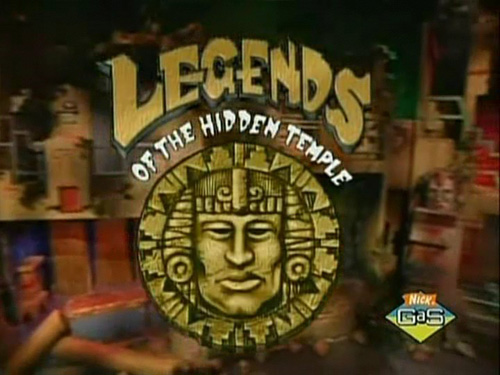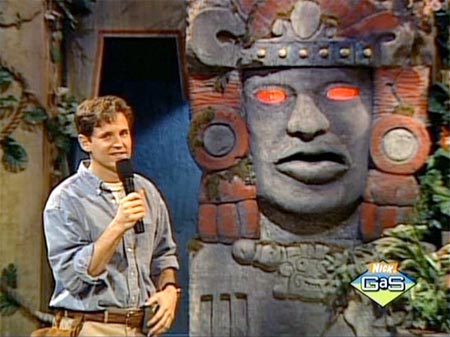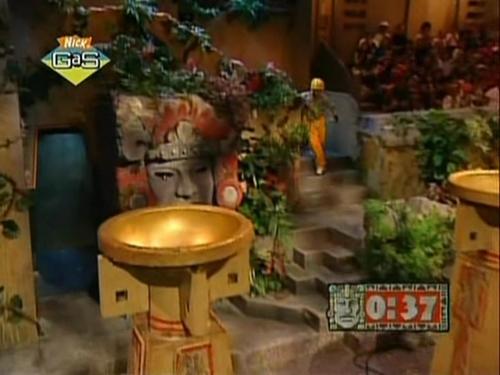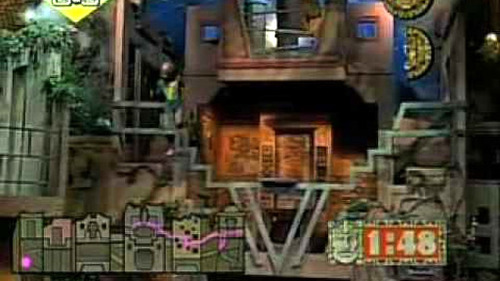Renegade – Ass kicking in the Master System

Do you remember “The Renegade” with Lorenzo Lamas? I know you do. That TV Show sucked. I mean compared with other TV shows from that time, it certainly sucked. Wayback before that TV show, in 1986, Taito released a game called “Nekketsu Kōha Kunio-kun”. It was a simple beat-em-up arcade, similar to Double Dragon. Do you remember Double Dragon? Anyway, when this Japanese game (Kunio Kun) got released in America and Europe, it was called : Renegade. Yeah, like the TV show.
Besides being a good beat-em-up for the time, it was actually the first game of the “Nekketsu Kunio Kun” series (Do you remember the sports franchise, right? well, Google them). After its success on Arcades, the companies were interested on making ports of the game for all the available systems: So Famicom got its port in 1987 and Master System got its in 1993. Yeah, 6 years later and actually 1 year after The Renegade show appeared on TV. So it was quite natural that all the kids thought that this was a Tv-show based videogame and you were playing as Lorenzo Lamas kicking butts in the streets. At least that is what I thought.

Apparently none is tuff enough for him…
To keep the story short and sweet, you’re a really pissed off guy fighting on the streets because your girlfriend got kidnapped, and you must rescue her using your fists . There are street levels, subway levels, park levels and a great variety of enemies. You might think that the plot is very simple and at that time we were kind of tired of always rescuing girls and yeah, we were, but you know, this was Lorenzo Lamas and he was really pissed off, so it was sort of cool. He got all the ladies, so we wanted to do the same.

Something you don’t want to try in real life
With Button 1 you kick to the left, with button 2 you kick to the right, pushing both buttons at the same time performs a flying kick, and holding down and pressing 1 or 2 you punch enemies on the floor. Also if you press twice to the left or right plus 1 or 2 you make a short run with a strong punch. These are the basic controls in the game, but most of the time you’re going to be dealing with the direction and I hate this, because it reminds me of Double Dragon so much. Why didn’t they used button 1 for punch and button 2 for kick and control the direction with the D pad? We will never know. Stupid programmers.
There are two cool items: the “P” gives you more attack power and the “S” gives you invincibility for a short period of time. The letter “P” on the screen is your life-bar, and “E” stands for the enemy’s lifebar. Levels are restricted by time, so if you ran out of time, you lose a life. That is so unfair. Time limit? Seriously?
The graphics are OK, the backgrounds and general scenery is well done, there’s a lot of flickering going on because the Master System just like the Famicom can’t really put a lot of sprites in the same line, so that’s why when you punch or kick people, you will see legs and faces disappearing.

Lorenzo kicking some butts. Wait, Lorenzo?

Punks have been enemies since videogames were invented.
There’s a cool level in where you ride your motorcycle, and it’s kinda cool because this part actually reminds me the Tv show with the difference that Lorenzo Lamas rides a Harley Davidson and the guy in the game rides a speed bike, like a Yamaha. That level is quite fun and a good change between the beat em up levels. Like I said, there are a high variety of enemies, most of them come with their bare fists, but a lot of them have weapons with them. There are bosses too, most of them wearing pink suits and at some level there’s a boss called Mad Granny (Yeah, WTF), and she will beat your ass if you don’t play smart. The purpose of the game is to kick Mr. K’s ass and rescue your gal.

The bike-riding levels brings some freshness to the game

Mrs. Granny is a pain in the rear.
All in all, Renegade is a good experience, with good graphics and decent sound. For sure it’s not going to get a prize for the “best beat em up of all time”, but it was the Master System in the 90′s, so we weren’t expecting much from it. Furthermore, this game is an instant classic just for being the first Nekketsu Kunio Kun title. So go and play it.
If you’re curious about the TV show you can check this fansite: http://www.renoraines.net/ . There are lots of nude men there, so be warned.
Legends of the “unfair” hidden temple
Hello all, I just wanted to rage a little bit and I decided to write about one of my favourite all-time tv shows: Legends of the hidden temple. This show was aired on Nickelodeon from September, 1993 to 1995. It was an adventure-action tv show where 6 different teams competed against each other for the chance to get inside the temple and claim the prizes.
The teams were: the blue barracudas, red jaguars, green monkeys, orange iguanas, purple parrots and silver snakes. These teams compete in three different rounds. The first round of the show, called “The Moat” involved a stunt where the six teams had to get across a narrow swimming pool known as the “moat” (duh). Some of the commonly used methods included rafts, ropes, and bridges. All six teams attempted to get both members across and punch a button. Typically, if a team member fell in the water, that partner (or occasionally both teammates) would have to go back and try again until they could get across. The first four teams to hit their gongs advanced to the second round, known as “the steps of knowledge”.
Olmec (the giant head) begun the Steps of Knowledge by telling the remaining teams the episode’s legend. After finishing, he asked the teams a series of questions to test their memories. A team that knew the answer buzzed in by hitting the button (known as an “ancient marking”) on their step with their feet, and their staircase lights up so they can answer (if Olmec was still in the middle of asking the question, he would stop talking immediately). Each multiple-choice question had three possible answers. If the team answered correctly, they moved down to the next level. If a team answered incorrectly or went too long without an answer (three seconds after being called upon), the other teams would have a chance to answer. The first two teams to step down to the bottom level by answering questions correctly moved on to the next round. Some people of the time called this part of the show a “time-filler” because “none came up with something clever”, in my opinion, as a kid in that time, I think it was kind of fun, I used to answer the questions and sometimes I was shocked of how stupid some contestants were.
The Temple Games (or the third phase) round was introduced as a turning point in the episode away from the unpredictable Moat and mind games of the Steps of Knowledge, where “the glory [went] to the fastest and the strongest.” Here, the two remaining teams competed for as many pendants of life as possible in three physical challenges. The first season featured more of an emphasis on teams climbing and/or crossing ramps to retrieve objects, while hindered by bungee cords attached to them. Most times the ramps were covered with soap or water to make it more difficult. The second and third seasons introduced more physical activities such as climbing, riding moving or spinning objects, or spinning a giant wheel. The first two challenges, which pitted a single member of a team against another, awarded a half-pendant each, and the final challenge, involving both teams in whole, awarded a full pendant. If a Temple Game ended in a tie, both teams were awarded the pendant value of that game. After these rounds, the team with the greater number of pendants went on to the final round.
In the event that the two teams’ pendant totals were tied after the three games, Olmec asked a tiebreaker question to determine the winner. A “tiebreaker pedestal” was brought out, and the first team to hit the button on top of their gong earned the chance to answer the question. The team would have three seconds to answer, and their first response had to be accepted. A correct answer allowed the team to go to the Temple.
At this point everything seemed kind of fair, but when the winner team had to go the temple is when things got really unfair. To make a rough stat, only the 30% of the teams during the three seasons have won the prizes, which in my opinion, it’s kind of low for a children TV show. Even more, if you start to think that only 1 team could actually make it to the temple that reduces the numbers even lower. What were they thinking?
In the final round, often known as the Temple Run, the winning team took whatever Pendants of Life they had (most commonly, a full pendant and half of the second) into the temple. The temple consisted of 12 to 13 rooms, depending on the layout, each connected by a doorway which may or may not have been open during the game, depending on the setup used that day. One room in the labyrinth had the themed artifact; three rooms held Temple Guards (which were really scary motherfuckers). If the winning team had an incomplete pendant, the remaining half-pendant would be in a room as well. However, if the team had only one pendant going into the temple, there would be no hidden pendant. In that case, if the second player ran into a Guard, the game would end (extremely unfair).
The winning team had three minutes to retrieve the artifact. One player was sent in first, with a complete pendant. The second player remained outside the Temple gate to watch the first player’s progress. In each room, completing a puzzle or accomplishing a task would unlock a door to another room. When a player encountered a Temple Guard, the player was forced to give up a full pendant in order to continue or if caught without a pendant be taken out of the temple. The second player now had the chance to enter, with all opened doors remaining open and all known Temple Guards nonexistent. If the second player possessed only half a Pendant of Life, a Temple Guard could catch him or her and end the game. To prevent that, the second player would also have to find the other half of the pendant which was hidden in the temple. It was often well-hidden and only a few contestants have found one during their run (everything in less than 3 minutes, something that children can achieve).
If either player reached the artifact, all remaining Guards “vanished” and all locked doors instantly opened, allowing the player to escape unhindered. Just for getting into the temple, the team automatically won a prize. If they picked up the artifact, they also would win another prize of slightly higher value. If they escaped with the artifact before time ran out, the team won a vacation (sometimes to another country), or a week at NASA’s Space Camp, in addition to the two merchandise prizes. If you watched the show as I did, you should know that not many teams actually did it on time or were able to actually ensemble the friggin silver monkey artifact. Actually, I can’t recall how many times I yelled at the TV set “That’s not the way you moron!”.
Generally speaking “Legends of the hidden temple” despite of its insane difficulty, it was a worth to watch show, even these days I have a blast watching it (and I am 30). I think TV needs shows like this one, where children can win prizes while doing exercise unlike those creepy and crappy shows that Nickelodeon airs these days. They should do like in Japan, where they still air this show and many other shows from the 90’s. In conclusion, if you missed this piece of history, there are many youtube videos about it, go and watch them. I would like to thank to Linda and her great website about this TV show, you can check it here: http://legends93.webs.com . It’s a really old website but always worth to check.







